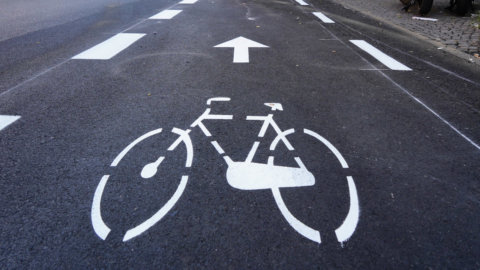The road is mapped out for bicycles, or rather, the bicycle path it is. The EU launches the Bicycle floor and defines the new strategy is preferably used for cycling mobility, a strategy that aims to encourage the use of two wheels and the green transition of mobility in the 27 Member States. Starting with the recognition of the bike as a full-fledged means of transport and the official designation of 2024 as the European Year of the Bicycle. This is what emerged from the parliamentary resolution voted on 31 January in Strasbourg, with 38 votes in favor and only one against, in which the MEPs of the Transport Committee ask for new attention to bicycles both at a production, infrastructural and strategic level.
The first steps towards a European bicycle strategy
The proposal adopted by the Commission is divided into: 18 points and starts from a clear assumption: the bicycle is a means of transport and must be placed on the same level as the others. In the resolution, Parliament invites Member States and local governments to increase investments in cycle connections, especially at the interurban and metropolitan level, to give people a safe and sustainable mobility alternative.
Integration with public transport and the provision of safe bicycle parking will have to improve hand in hand to make cycling an increasingly accessible option. Here are the main points of the parliamentary resolution for a European strategy on cycling.
Double the kilometers of cycle paths in Europe
Among the objectives put on paper by the body of the European Parliament and sent back to the Commission's commitment is the doubling of kilometers of cycle paths present in the old continent, bringing them to 5 by 2030. Making the use of the bicycle for one's daily journeys easier and more advantageous can bring great advantages for health, the environment and the economy.
More guarded parking (less thefts)
I theft of bikes often “discourage” many users from using bicycles. This is why the resolution calls for more effort in the implementation of guarded parking lots and stations that also include recharging points for the batteries. In addition, education and training campaigns will need to be developed, in accordance with EU road safety legislation, to raise awareness of road safety.
More cycling infrastructure and more seats on trains
The European Parliament then encourages the regional authorities to maintain the cycling infrastructure implemented during the health emergency and to take concrete actions to properly integrate cycling into their urban mobility frameworks. Primarily through better connectivity between suburban areas and urban centers with "cycle highways" and again by promoting multimodality, i.e. the creation of synergies between cycling and other means of transport, such as the increase in parking areas at stations and mobility centers and the availability of more spaces for bicycles on trains. An important development especially on regional routes.
The industry to support: promoting Made in Europe
For the development of cycling, it is also necessary to focus on the development of the European two-wheeler industry. The European Parliament calls on member states to support the production of bicycles and components Made in Europethereby boosting the competitiveness of EU industry to reduce dependence on Asia, closing the investment gap, maintaining a global level playing field and encouraging high-quality jobs, creating cycling clusters and improving training industry-related professional.
Bicycles: towards the VAT cut
The cornerstone of the strategy is to encourage the use of bicycles among citizens. As? Among the proposals of the MEPs appears the “reduction of VAT rates for the supply, rental and repair" of traditional and electric bicycles. For example, as did the Portuguese government which last November cut VAT from 23% to 6%. Cutting the value-added tax not only for bicycle purchases, but also for rental and repairs would give the whole sector a significant boost.





